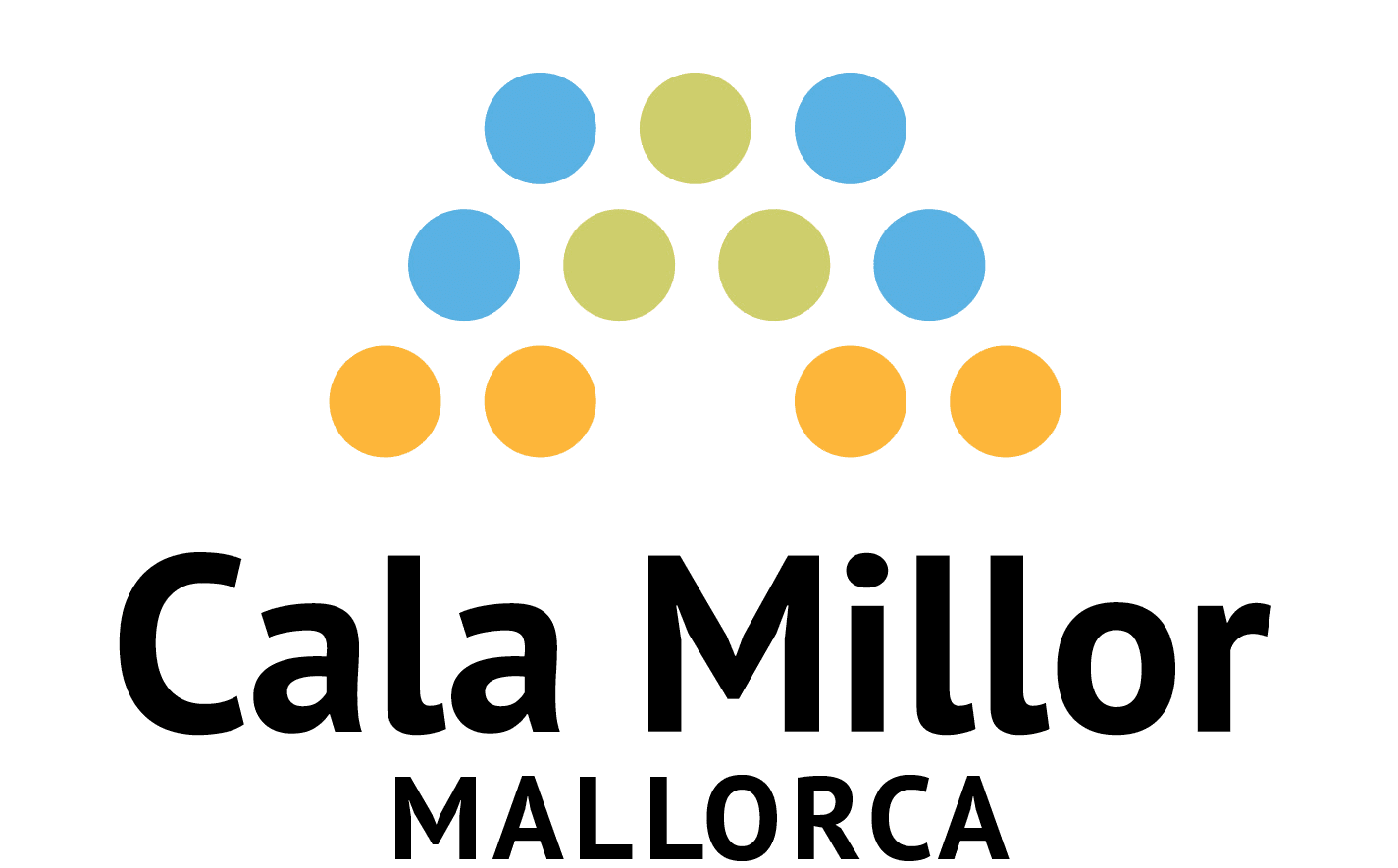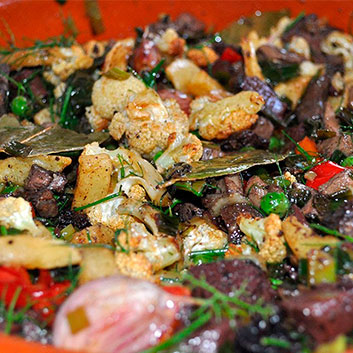The best known and appreciated dishes include:
Sopes mallorquines made with vegetable broth, pork and slices of dried bread added in the last cooking phase.
Tumbet made with layers of fried potato, red pepper and aubergines served with meat or fish.
Arròs brut, soggy rice made with pork, chicken, vegetables and seasonal game.
Frit mallorquí or de matança, prepared with pieces of liver, loin of pork, potato and peppers. A variation of this is the freixura, a typical lamb dish served during Holy Week.
Roast lamb or suckling pig, rabbit and onion, loin of pork and cabbage, thrush and cabbage or onion and snails cooked in aromatic herbs are some of our other outstanding dishes.
A special occasion on which to enjoy one of these dishes is the pig slaughter, when families get together to make the traditional Mallorcan sausages, including sobrassada and butifarró.
The Mediterranean offers a variety of products with which to make both “dry” and “soggy” rice dishes. They include fish, squid and cuttlefish (grilled or stuffed with meat), and fish baked in the oven or a la mallorquina (cooked with layers of potato and vegetables). Other traditional dishes are llampuga with peppers, a seasonal fish caught in autumn and served fried with peppers and potato; or fish in marinade, which is fried and left to cool marinating in olive oil and vinegar with onion and laurel.
One of the basic products of our cuisine is Mallorcan bread, a thick, round, unsalted bread found at all our meals. It is used to prepare pa amb oli (bread with olive oil), the star turn of our diet made with slices of bread, ramallet tomato, olive oil and a pinch of salt and usually served with cheese, grilled meat or any kind of sausage.
Other products made with wheat are the cocas, a flat dough baked in the oven and topped with vegetables, parsley, grilled peppers or the ingredients of the trempó, a traditional salad of tomato, green pepper and onion; the cocarrois, half-moon-shaped pasties stuffed with vegetables or onion; or round pasties filled with meat and peas.
Among our traditional sweets is the famous ensaimada, a spiral-shaped pastry made with flour, sugar and lard, essential at any celebration; or the gató, a typical almond cake. Holy Week is the time to prepare robiols¸ half-moon-shaped sweet pastries filled with cottage cheese or jam, as well as crespells.
Finally, our wines, liqueurs and traditional aperitifs are a grand accompaniment to the culinary preparations of Mallorca. Outstanding are palo, herb liqueur, rum and Mallorcan wines. In recent years there has been a surprising increase in the production of Mallorcan wines. There are currently about 60 wineries on the island that produce some 300 types of wine. Particularly interesting is their use of local varieties of grape, some of which had fallen out of use and have recently been re-introduced. They include red varieties such as Callet, Manto Negro and Fogoneu and white varieties such as Premsal.
The CALA MILLOR MALLORCA area has a wide variety of restaurants that offer visitors the traditional dishes of Mallorcan gastronomy. In the supermarkets and local markets it is also possible to buy products made on the island.


